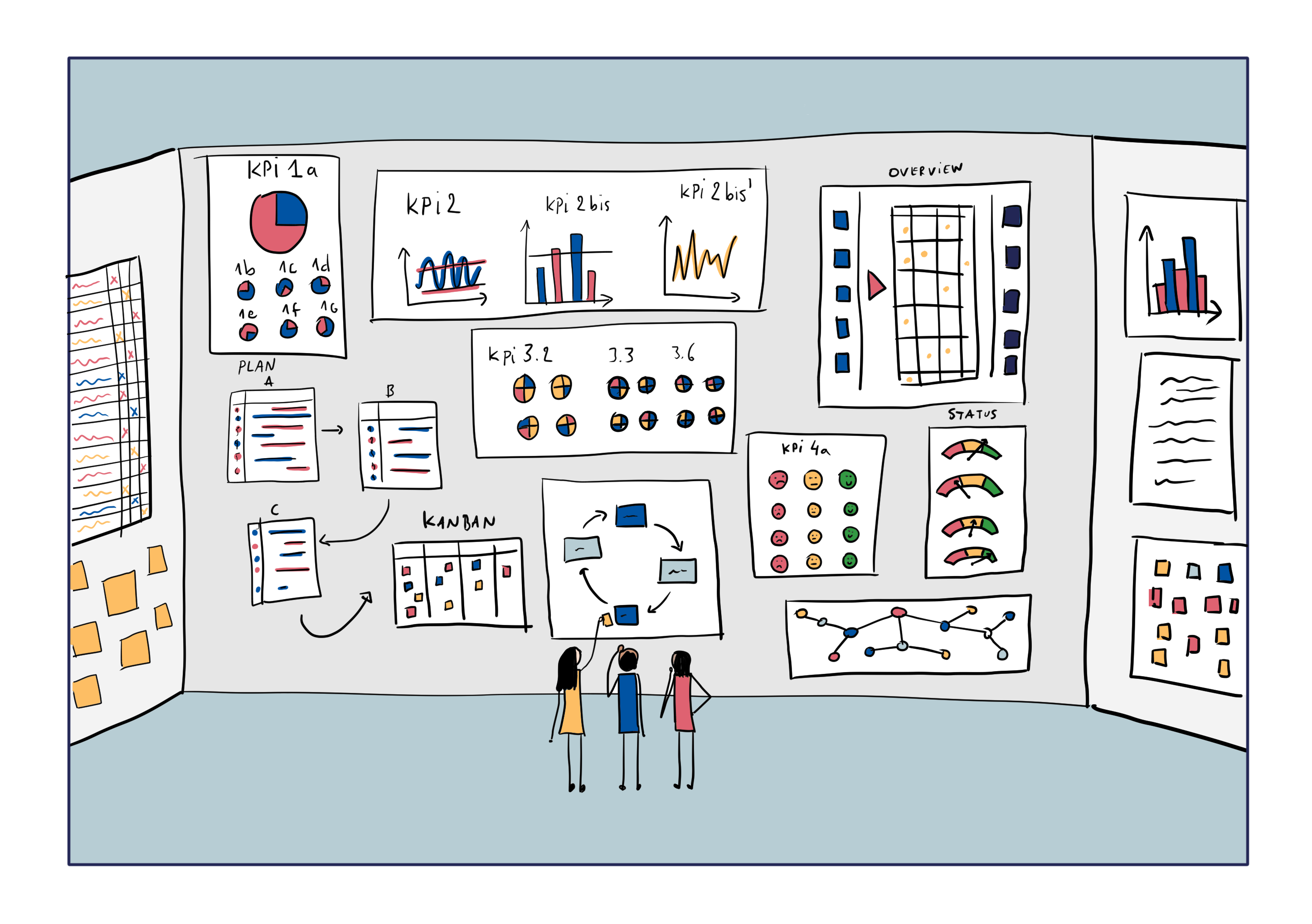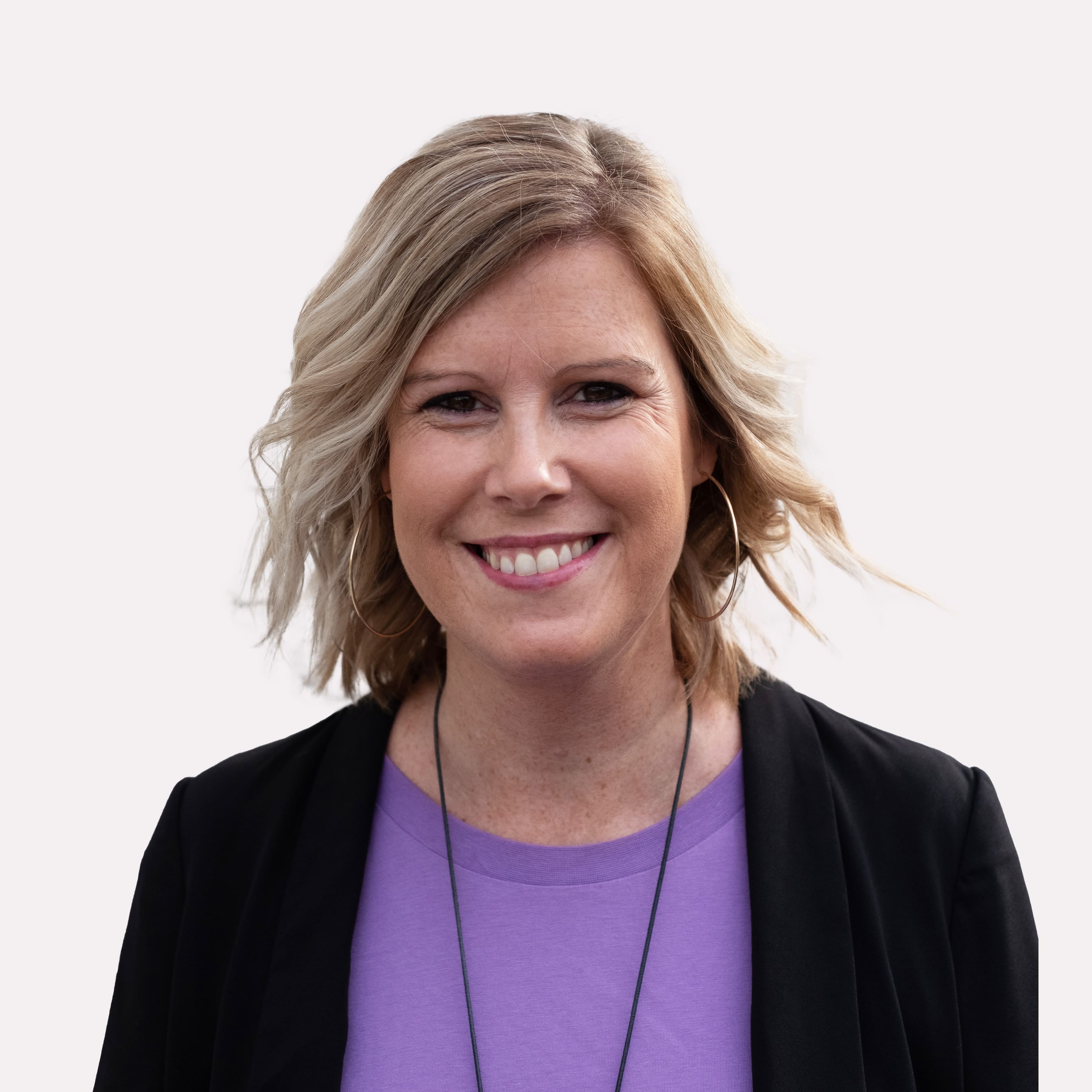
Part 5: The big Obeya room
Obeya: An Indispensable Foundation for Every Organization
In this 5-part blog series, we delve into the fascinating world of Obeya. We explore how Stanwick utilizes this approach in future-proof transformations. In this final part, all the puzzle pieces come together as we discuss setting up the Obeya room.
In a previous blog, we emphasized that the purpose of Obeya is to learn, not just to achieve results. Achieving results is a consequence of this learning process. However, we still need a system that guides us in the right direction and keeps us on the right path. This system forms our result-driven system.
You can think of this like following a diet. You've set a goal to lose 5 kg. You want to achieve this goal within 4 months because there's an important event on the horizon. You have a clear goal in mind, understand why it's important, and have made a plan to eat healthier and exercise more. But if you don't step on the scale occasionally to check your progress, you won't reach your goal. It might happen by pure luck, but the chances of success are greater when you track your performance and make targeted adjustments.
What are the elements in the Obeya room?
The contents of the Obeya room encompass the following elements:
- Direction and strategy: What is the higher purpose of our organization, and how can our team contribute to it? This information provides the framework for the team to determine the right actions and priorities. It ensures alignment and shared direction.
- Plan: How can we optimize our available resources to generate value for our customers?
- Performance: Did we have a good day? Where do we need to make adjustments? By creating a visual overview of our performance, it becomes immediately clear where problems lie, enabling the team to take focused action.
- Actions: We distinguish between short-term actions, displayed on a scrum board, and long-term actions that follow a structured improvement method. Both types of actions can be proactive or reactive, but we encourage teams to think more proactively.
- Process confirmation: In part 4, we worked with the team to establish our own "Obeya way of working." How do we want to collaborate? What agreements do we make? To ensure that these agreements are upheld and ingrained in the team members' DNA, the teams need to challenge themselves to adhere to them. Therefore, we integrate a few KPIs or questions that check the compliance with this way of working.
- Information sharing: What information does the team need to be operationally efficient? This can include information within the team, between shifts, between teams, or important updates.
An important decision the organization must make is the type of platform to use. Will we opt for a digital solution or choose a paper/whiteboard version? In recent years, interesting digital platforms have been developed, including 'iObeya,' specifically designed for these Lean Obeya applications. This provides the opportunity to process and share data digitally, increase accessibility, and work in a hybrid form. However, each choice has its advantages and disadvantages.
What are practical tips when implementing Obeya?
To conclude this Obeya series, we'd like to provide you with some practical tips:
- Keep it simple: A pitfall is visualizing too many details, which can obstruct the bigger picture and lead to excessive course corrections.
- Dynamic content: Start with a simple base of KPIs under the motto "good enough for now, safe enough to try." By actively engaging with them, the team learns and can further develop the content.
- The art of facilitation: The danger of a streamlined Obeya meeting is that it becomes a "check-the-box" meeting. The meeting facilitator plays a crucial role in ensuring the learning aspect of the meeting is preserved.
- Pace of transformation: The journey is certainly not a one-size-fits-all approach. Every team, organization, and culture is unique, and so is their change process. The speed of learning and development is difficult to predict. The journey must always be tailored, with the right priorities that the team requires.
Team autonomy and Obeya go hand in hand. A change in structure and systems goes along with a change in culture. Without a cultural shift, the system won't function or deliver the desired results. This belief forms the foundation of the 'Stanwick way.' The Stanwick team firmly believes that every transformation project should focus on both operational and organizational aspects. This way, Stanwick can fully support your organizational change.
DId you miss the previous blogs ?
Obeya - what is the team structure and the escalation structure? Read more in part 2
Obeya - what are the roles? Read more in part 3
Obeya - what leadership do we expect? Read more in part 4
Curious for more? Stay tuned.
If you have any specific questions, please visit our website or contact us. Stanwick is here to support your future-proof transformation!
Annelies Boecxstaens


